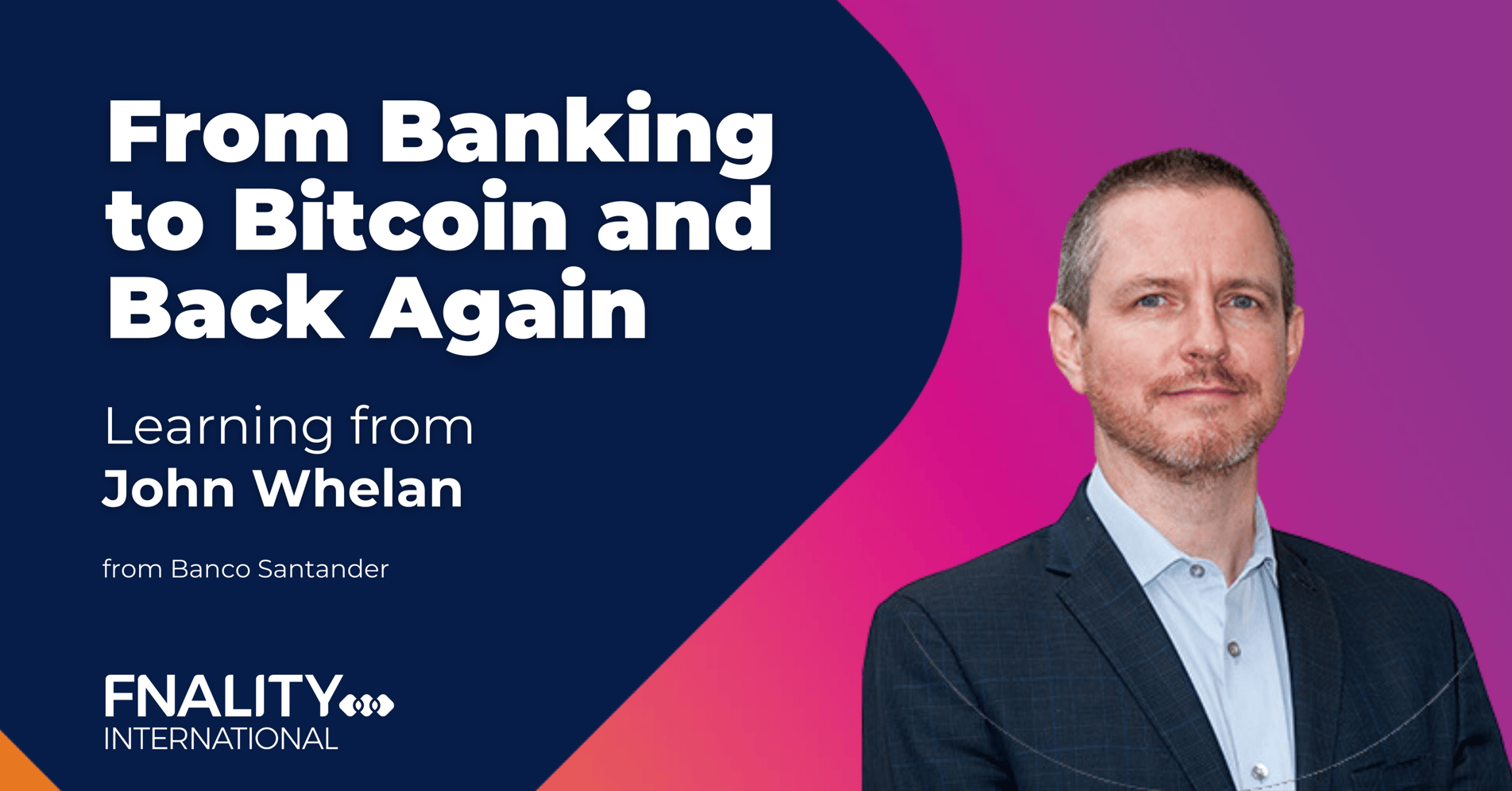
The world of finance has been rapidly evolving with the rise of blockchain technology and cryptocurrencies. One individual who has played a crucial role in bridging the gap between traditional banking and the digital asset space is John Whelan, the Managing Director of Crypto and Digital Assets at Santander. In this blog post, we will explore John's interesting personal journey to his current position, Santander's involvement with our first-of-its-kind payment system and the many reasons why John is enthusiastic about the future of finance.
John Whelan's career journey is a testament to his adaptability and foresight. Based in Madrid, working for Santander’s Corporate and Investment Bank as Managing director in their Crypto and Digital assists unit, John's role involves working with many of Santander’s business units across the world. It was early during his time at Santander that the idea for the Fnality Payment System was first conceived (originally as the Utility Settlement Coin – USC), a system that seeks to tokenize central bank money, laying the foundation for the future of digital collateral and wholesale payments and securities.
John joined Santander over seven years ago but his journey into the world of digital assets began during his time in Chicago. In 2012, John stumbled upon Bitcoin and began to study the technology behind it. Recognising that it was more than just a volatile digital asset, he saw the potential of blockchain as a programmable single source of truth, capable of transforming the entire financial system.
He then founded Coinist, a crypto startup in Chicago, USA where his initial research into distributed ledger technology (DLT) and blockchain in the banking sector opened his eyes to the immense potential of this technology. John's forward-thinking approach and passion for innovation have since made him a driving force within Santander, particularly in endeavours like the Fnality project.
Santander becomes a day 1 supporter for the USC project and later Fnality:
Santander's support for Fnality reflects its commitment to embracing innovation and staying ahead in the rapidly evolving financial landscape. Fnality (initially starting life as the USC project) aims to create a digital cash leg that is foundational for future advancements related to digital collateral and securities. Despite the challenges of convincing a traditionally risk-averse industry, John and his team at Santander have managed to garner support and enthusiasm for the project.
The bank has an internal team of experts, covering various aspects from technology to compliance to legal, to ensure the successful integration and adoption of the Fnality Payment Systems in time. By being an early adopter of this revolutionary technology, Santander is poised to be at the forefront of the future of finance.
Future excitements on the horizon for finance:
Having John at our fingertips meant we had the chance to ask what he was most excited about, and he provided three topics that were particular golden nuggets on the horizon for him:
- Collateral Mobility - Envisioning in the future a liquidity management engine for banks that allows ownership and flexibility in managing securities and cash. Platforms like HQLAx, which facilitate efficient collateral management, have captured his attention as has Onyx from JP Morgan
- Digital cash - Particularly in the retail space. While John acknowledges the ongoing discussions around retail central bank digital currencies (CBDCs), he emphasises that he believes personally for them to be truly exciting, they must be as powerful and flexible as stablecoins. He thinks more banks will begin to embrace cryptocurrencies like Bitcoin and Ethereum and start offering crypto products directly to clients. However, it must always consider the regulatory challenges that decentralised finance (DeFi) poses, ensuring that these products can be offered in a manner that aligns with regulations whilst still responding to market demands. On the wholesale side, projects like Fnality have piqued his interest, presenting a plethora of opportunities. Financial authorities of many countries across the world are now developing legislative frameworks to authorise novel payment systems, proving that regulators understand the growing industry's need for tokenised cash and assets.
- NFTs (Non-Fungible Tokens) - these have also captured John's enthusiasm alongside multiple others. While John recognises their relevance in geeky and financial contexts, he sees their true potential lies in the cultural domain. As an avid fan of digital art, he is particularly excited about programmable art and other intellectual property, which could revolutionise the way art, fashion, and music industries operate.
Conclusion:
Being able to hear of John's journey from traditional banking to the world of crypto and back as well as first-hand seeing his involvement in our project exemplified and evidenced for us, the transformative potential of blockchain technology in the financial sector. We, at Fnality, appreciate Santander's and John’s excitement and dedication to the project, along with our other shareholders and participants and their participation highlights these organisations' commitment to staying ahead in the ever-changing world of finance. As we move towards the launch of our Sterling Payment System later this year, we are able to start to tangibly see the exciting possibilities the future of finance holds.


